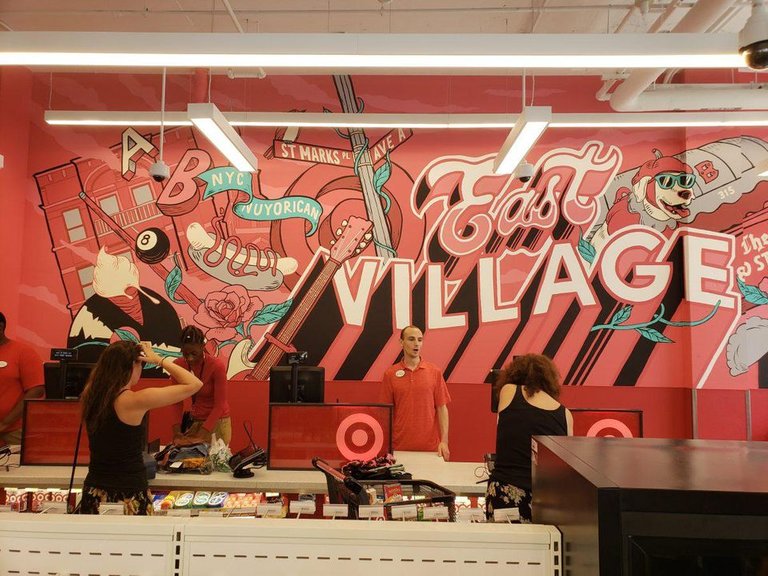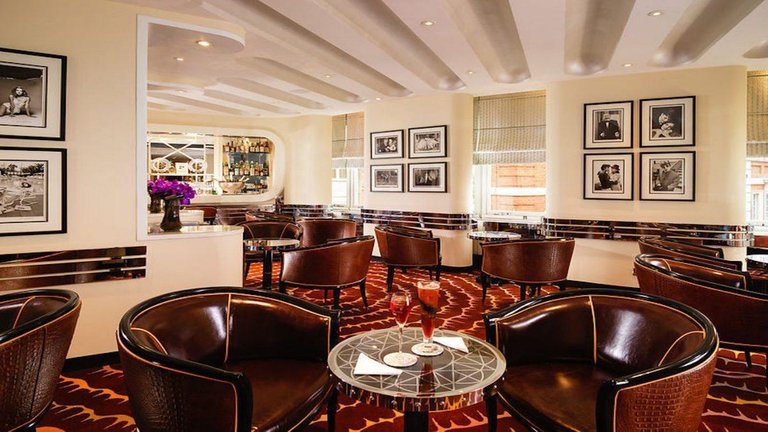In the late '90s and early 2000s, I would sometimes find myself at a dilapidated, pencil-case of a bar on 14th Street and Avenue A, in New York's East Village, called the Blarney Cove. It was a dump, but the beer was cheap and it stayed open well past the legal closing time of 4 a.m. And I, in my mid-20s and new to the city, happened to know people who knew people, or who at least knew the secret knock to get in.
Inside was always a motley assortment of others who also weren't ready to go home just yet: old drunks and young professionals, students and restaurant workers, all avoiding the dawn. Each time I emerged from that dank cave, my clothes saturated with smoke and the sun fully risen, I was reminded of why I moved to New York in the first place. Not for all-nighters at bars, necessarily, but for the unexpected, the sense of never knowing where your night — or your life, for that matter — might lead.
The Cove served its last pint in 2013, when the entire block was razed to make way for a luxury apartment building owned by Extell and called, in a twist of irony, EVGB, an allusion to the famed punk club on the Bowery, CBGB, which closed in 2007, after almost 35 years, when the building's landlord wanted to more-than-double the rent, and became a John Varvatos clothing boutique. Market-rate studios at EVGB, which stands, unironically, for "East Village's Greatest Building," start at $3,681 and 3-bedrooms are well north of $12,000. (A limited number of more affordable units are available to those who qualify.)
On Saturday, July 21st, EVGB's primary tenant — Target, which takes up the ground floor and basement — held a thoroughly ironic block party to celebrate its move to the neighborhood. The 14th Street location is one of the chain's "small-format" stores, intended to integrate into — or infiltrate? — densely packed urban neighborhoods that don't exactly lend themselves to big box megastores.
What made the block party ironic? As Jeremiah Moss, of the blog Vanishing New York, writes of the event: "Target has constructed a simulacrum of the hyper-local New York street — the sort of street that is being wiped out by corporations and developers — and it comes complete with all the signifiers. The façade is draped in vinyl sheets printed with images of tenements, the same sort of buildings that get demolished to make room for such developments. Here they sit, hollow movie-set shells, below the shiny windows of the high-end rentals. They are the dead risen from the grave, zombies enlisted to work for the corporation."
It didn't stop with the vinyl sheets, either. Moss describes plastic replicas of the battered, bygone Village Voice kiosks that used to populate the neighborhood's sidewalks; a fake stoop where a real hip-hop dancer was hired to practice his moves around Target-red plastic buckets; and even a red-and-white bullseye (i.e. a Target logo) on what looks like a metal gate like those shopkeepers pull down over their storefronts at night, and which often get adorned with graffiti. Visitors were invited to pose in front of that logo with foamcore simulations of yesteryear East Village artifacts: a guitar, a slice of pizza, a record album.
The French philosopher Jean Baudrillard described simulacrum as having four stages, and this new Target store seems to embody the second stage: as a perversion of reality, in which the sign is seen as an unfaithful copy that “masks and denatures” reality, but that still hints at that reality even if the sign is incapable of encapsulating it. Then again, it may already be the fourth stage, in which the sign no longer bears any relationship to any reality whatsoever, where, as the term's Wiki entry puts it, "signs merely reflect other signs," and "where cultural products need no longer even pretend to be real in a naïve sense, because the experiences of consumers’ lives are so predominantly artificial that even claims to reality are expected to be phrased in artificial, 'hyperreal' terms."
Regardless of which stage Baudrillard might apply to this new Target store, it represents a useful distinction between gentrification and commodification: While the store has displaced many local businesses that have served the community for generations — a hair salon, a laundromat, two bargain stores and, of course, my beloved Blarney Cove — Target, at least in terms of price point, is not Whole Foods. However, in this small-format outpost of the Minneapolis-based chain, we see cultural commodification in full flower, an ironic, tone-deaf nod to a history that few of EVGB's residents will appreciate or, possibly, understand. Indeed, how many non-residents will?
When I stopped in this week to see the scene for myself, I asked a young worker if I could take a few photos of the mural over the cash registers, and glanced in their direction. "Sure," he said, following my eyes to the swirl of East Village references, from Theatre 80 St. Marks to the Nuyorican Poets Cafe, on the wall not 20 feet away. "I didn't even notice it before now.

Hi! I am a robot. I just upvoted you! I found similar content that readers might be interested in:
https://www.forbes.com/sites/davidalm/2018/07/24/punks-ironic-graveyard-target-opens-in-the-east-village/